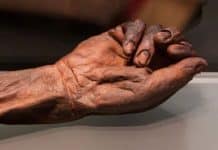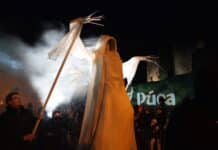Ireland has been executing criminals and indeed the innocent for centuries. Despite the years of practice it turns out the Irish weren’t very good at it! CHRIS RUSH takes a look at five of the strangest executions of the Emerald Isle.

It’s been over 60 years since the last person was executed in Ireland, however, many may be shocked to hear that you could be sentenced to death up until as recent as 1990 until it was abolished.
Here are five strange Ireland executions
Burn her!
In March 1895, 28-year-old Bridget Cleary went missing in County Tipperary. Some days later her charred body was found in a shallow grave. Claiming that she was possessed by a fairy, her husband and family members burned her alive to rid her from this world.
There is even a poem based on this story which is “Are you a witch or a fairy, or the wife of Michael Cleary.” The execution itself was carried out by her husband setting fire to her nightgown and then dousing her in lamp oil.
He sought the help of her brother to carry her to the shallow grave, where her burned body was buried. Read more about Bridget Cleary here.
Have you got a light?
Tom and Albert Pierrepoint carried out 29 executions on behalf of the Irish State, with Albert doing the majority of them. He would light a cigar and leave it aside while he performed his duty and then collect it once the task was complete.
The hangings were carried out in Mountjoy prison at 8am in the morning where the body would be left hanging for an hour to ensure the strangulation was complete. The Pierrepoints were paid £10 and expenses for their efforts and afterwards the governor would rate their performance.
Is hanging not enough?
Saint Catherine’s church in Dublin is where Robert Emmet met his end in 1803. Following hanging, he was then beheaded for good measure. A plaque is still present at the site today, remembering the event.
Hang on!
In 1783 at Newgate, Patrick Lynch was hanged using a new hoisting system, which never would be used again following its performance. With the rope placed around his neck he was hoisted into the air.
Due to the fact that his neck wasn’t broken by this new method of execution, Patrick survived from 12pm until 4pm until he finally died in front of thousands of onlookers.
Time to feed the birds!
In March of 1786, Robert Jameson was hung and gibbeted. This is where the snap-necked, naked body was placed into a bath of boiling pitch or tar. Once cool the human statue was placed into a cage which was then suspended. Robert’s body was displayed using a tall wooden support.
The reason for this was type of execution was to deter any other individual from carrying out the same crime, the body would be displayed until it rotted away or was eaten by the birds.
After a week Robert’s body was chopped down outside Kilmainham Jail. It was displayed once more by the jail only for it to by chopped down two weeks later once again. Following this the body was removed from the iron cage and buried on Gallows Hill.







